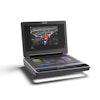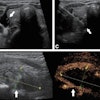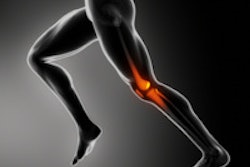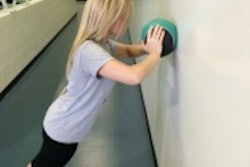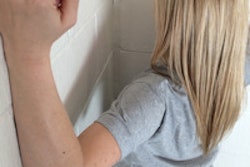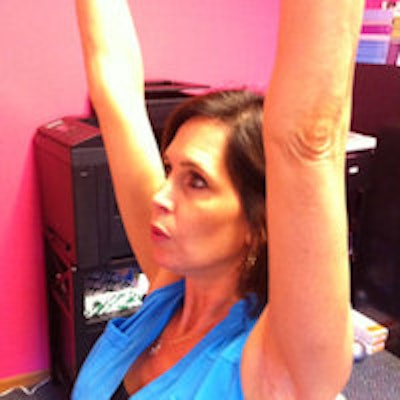
Like so many of my fellow sonographers, I suffered from debilitating shoulder pain. Without regaining the ability to scan pain-free, I would not have been able to make a difference in my career as a cardiac sonographer.
In the first article in our series, I shared an event in my life that made me realize just how important my work as a cardiac sonographer really is. To make a long story short, I had performed a cardiac ultrasound study on a 47-year-old man in our intensive care unit who had received an initial diagnosis of atrial flutter. During the scan, I also suspected the presence of a pulmonary embolus and alerted a cardiologist. My action likely contributed to saving his life.
From my perspective, there are several factors that contributed to this success story. First, I have 14 years of training and experience that helped me recognize a potentially life-threatening issue.
Second, I love my job and take great pride in what I do. I want to be the best that I can be for every patient. I take the attitude that I'm going to give the same effort for each patient as if they were my mom and dad. I don't consider myself to be just a mindless robot taking the same pictures the same way over and over again. I change some of my study protocol based on what the study is showing me.
Third, I am able to scrutinize and slow down when necessary to look at all the nooks and crannies that each study entails. I'm able to do that because I don't scan in pain or suffer from the injuries that plague so many of my fellow sonographers. Because I don't scan in pain, I'm able to take the time to look at what the study is showing me and scrutinize it until I'm satisfied that I have all the information.
Overcoming shoulder pain
Let me give you a brief refresher on why I can scan pain-free. Approximately three years into my scanning career I was suffering from debilitating shoulder pain. Fortunately, I was lucky to speak with my colleague Mark Roozen, a National Football League strength coach, about my pain/injury issues.
Mark looked at my body, my pain issues, the mechanics of my job, and how it involved the ergonomics of my body. He prescribed a set of simple exercises that he said would completely alleviate my pain. I exercised as he instructed and my pain went away -- and stays away to this day. Mark's method worked so well for me that we thought other sonographers could benefit, and we decided to educate sonographers about corrective exercise.
You may have noticed that I used the term "corrective exercise." The stretching and exercise education that we recommend is designed more for corrective action and not for fitness purposes. Alleviating your pain/injury issues is the goal, although, as with almost any type of exercise, there will also be a fitness component.
Reaching for relief
Chronic tightness in the shoulders and neck, pain that radiates through the neck and shoulders, reduced range of motion, and that stereotypical office worker hunch are the great plagues of modern life.
The situation is made worse because of the U.S. mentality about work: To get ahead, we need to do more!
We want to get ahead at work, so we spend more time at our desk, try to get in one more client, and push to do more and more. But if we spend too much time working in a position with our head forward, shoulders rolled, and hips tucked under, we risk repetitive-use injuries that will start taking a greater and greater toll on our health and performance levels. We will end up doing less, but taking more energy to do it. We work harder to become less effective and efficient!
Very few of us feel we can afford to slow down or take time off. It's interesting to look at other countries and their model of time off, recovery, and ways of refreshing the body. But that's for another article.
Most of us don't have massage therapists sitting behind us at work or waiting in a side office so we can slip in for a quick 10-minute massage. We don't have a trainer or therapist waiting around to provide some corrective treatment throughout the day.
The good news is that for the most part, we can take matters into our own hands. The do-it-yourself approach only takes a few minutes, a few times a day.
As described by Mark Roozen, here are some simple stretches and exercises to help you live pain-free. The exercises can be performed separately or bundled together. A single exercise can be completed in less than a minute, and all three can be performed together in less than five minutes. Another huge benefit is that you can do these sitting at a desk or standing behind your chair; you won't break into a sweat and have to run to the restroom to prep yourself to get back to work!
Exercises
Movement No. 1: Overhead reach
Sitting at your desk or standing behind your chair, reach both arms overhead as high as possible, with palms facing in and thumbs pointing behind you (figures 1A and 1B).
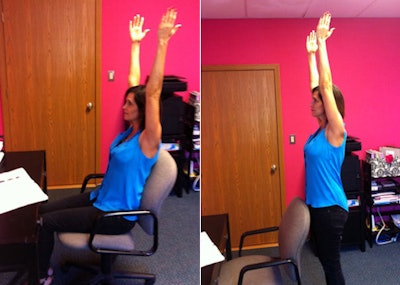 Figures 1A and 1B. All images courtesy of Doug Wuebben.
Figures 1A and 1B. All images courtesy of Doug Wuebben.Now here's the tricky part: As you extend your arms overhead, push your shoulders back and imagine that you're pinching a pencil between your shoulder blades (figure 1C).
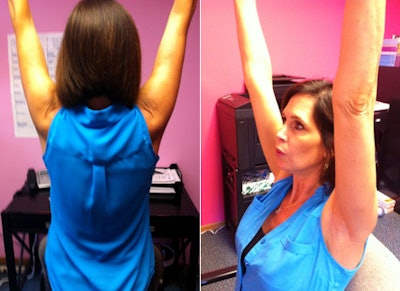 Figures 1C and 1D.
Figures 1C and 1D.Keep reaching as high as you can, and at the same time exhale as if you are blowing out five huge candles (figure 1D). Inhale through your nose and exhale through your mouth. This should open up your chest, allowing you to breathe easier while at the same time relieving stress and strain in your neck and shoulders.
Movement No. 2: Thumbs-back reach
Sitting at your desk or standing behind your chair, extend both arms down by your side. This time, open the palms to the outside, rotating the hands so the thumb is again pointing behind you (figure 2A).
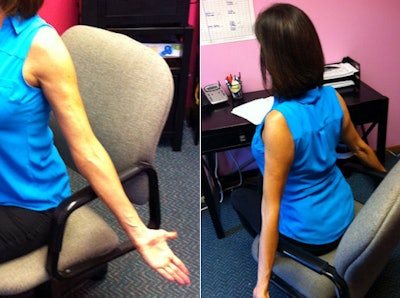 Figures 2A and 2B.
Figures 2A and 2B.Again, think of pinching that pencil between the shoulder blades while sitting or standing as tall as possible (figure 2B).
While continuing to reach back as far as you can, once again blow out those five huge candles. Inhale through your nose and exhale through your mouth. This is another great movement to open up your chest and allow you to breathe easier while at the same time relieving stress and strain in your neck and shoulders.
Movement No. 3: Head-to-shoulder reach
 Figure 3A.
Figure 3A.
In a seated or standing position, make yourself as tall as possible. With this movement, imagine that someone is pulling you straight up from the top of your head (figure 3A).
At the same time, push your shoulders down and back, pinching that pencil once again.
Slowly tilt your head toward your shoulder. Picture trying to place your ear on top of your shoulder (figure 3B).
Now, slowly and gently rotate your head, bringing your chin up toward the ceiling, while still trying to keep your ear on your shoulder (figure 3C). Be sure to do both the right and left side to get great neck relief and relieve muscle tension in the upper neck/shoulder area.
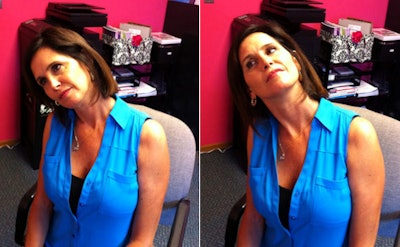 Figures 3B and 3C.
Figures 3B and 3C.You can do all three of these exercises two to three times a day, or any time you start to feel tension build up throughout the day. In our next session, we'll show you some great movements to help relieve tightness in the chest, shoulders, and lower back.
Doug Wuebben is a registered cardiac sonographer who performs adult and pediatric echocardiograms in South Dakota and can be reached at [email protected]. Mark Roozen is a strength coach with the Cleveland Browns and also the owner and president of Performance Edge Training Systems (PETS).
